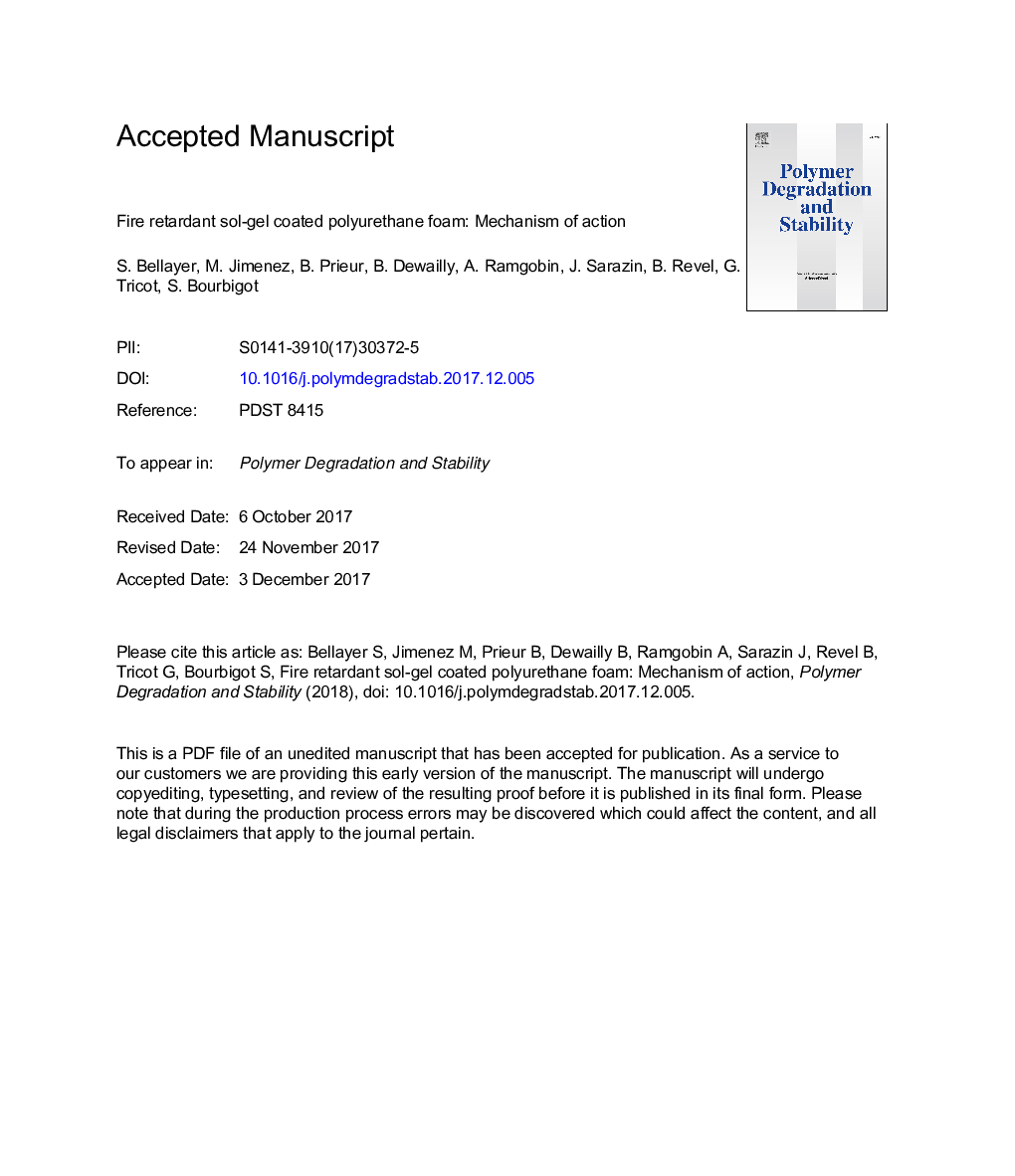| Article ID | Journal | Published Year | Pages | File Type |
|---|---|---|---|---|
| 7824202 | Polymer Degradation and Stability | 2018 | 21 Pages |
Abstract
This paper investigates the flame retardant (FR) mechanism of action of a flexible PU foam, flame retarded with a sol-gel coating made of a mixture of tetraethoxysilane (TEOS), methyl triethoxysilane (MTES), 3-amino propyl triethoxysilane (APTES) and diethyl phosphite (DEP) in an ethanol/water solution. To build a mechanism of action, the coating as well as the residues obtained after fire testing were analyzed using solid state nuclear magnetic resonance (NMR), rheology, thermogravimetric analyses coupled with infrared detection (TGA-FTIR), microcalorimetry of combustion (MCC), smoke box and Pyrolysis Gas chromatography coupled with mass spectrometry (Py-GCMS). The coating shows an intumescent behavior upon burning exhibiting significant expansion and bubbling. The expansion occurs in two steps: a first step around 190 °C, related to the release of ethanol, and a second one around 380 °C, related to the release of non-degraded DEP, ammonia and propylene during degradation of the PU matrix. The flame retardant effect occurs (i) in the condensed phase by intumescence, which yields a thermal insulating layer made of a SiO2 and Si-O-P network mixed with orthophosphate at the surface of the PU foam, but also (ii) in the gas phase by the release of non-degraded DEP, which acts as free radical scavenger. The coating allows the protection of the underlying PU foam during burning as well as the reduction of the amount of smoke released.
Related Topics
Physical Sciences and Engineering
Chemistry
Organic Chemistry
Authors
S. Bellayer, M. Jimenez, B. Prieur, B. Dewailly, A. Ramgobin, J. Sarazin, B. Revel, G. Tricot, S. Bourbigot,
